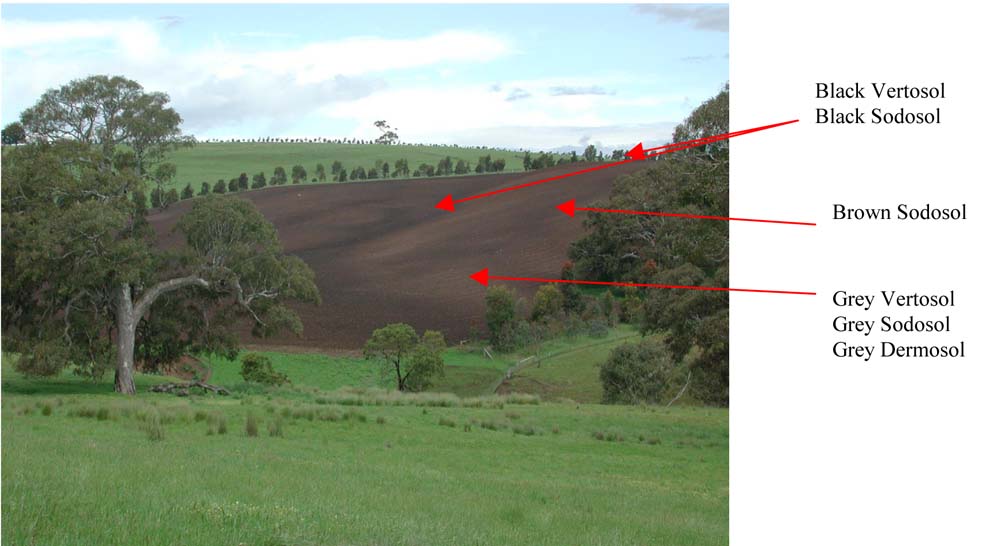GL99
Location: Casterton
Australian Soil Classification: Vertic, ?, Grey DERMOSOL (confidence level 4)
General Landscape Description: Rolling low hills and rises
Site Description: Lower slope
Land Unit: Merino Tablelands
Geology: Cretaceous non-marine sandstone
General Land Unit Description: This unit consists of the Cretaceous non-marine sandstone of the dissected Merino Tablelands. The tablelands were thought to have formed under swamp conditions and a warm climate. As a result, the soils tend to be high in clay and there tends to be carbon rich seams of charcoal deposits at depth in some of the profiles. The main soil type used to represent this land unit is black cracking clays (Vertosols) that can be sodic at depth. This soil type, along with Black Sodosols, Chromosols and Dermosols, are commonly found on the broad crests or drainage lines. The slopes often consist of Brown Chromosols, Sodosols or Dermosols, although black soils can also occur on the slopes. The lower slopes commonly have Grey Vertosols or Sodosols as the major soil type. The reasonably deep sodic soils on short steep slopes tend to be prone to landslips. The grey soils, in particular are prone to water erosion


Key profile features:
- Possibly cracks at depth
- Sodic subsoil
- Subsoil dispersive when dry
- Mottled subsoil
- Subsoil strongly alkaline at depth
Profile Described By: Natalie Baxter and Grant Boyle, 9th October 2000.


